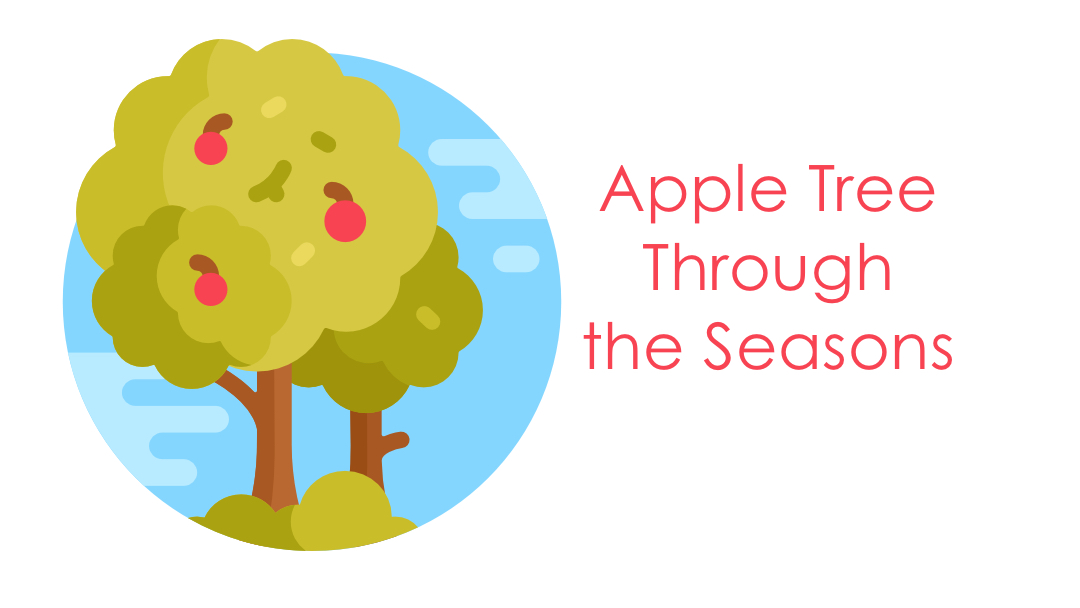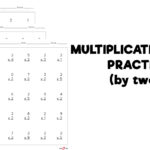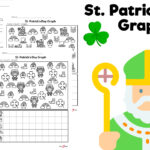Lesson Overview: This lesson teaches the changes that occur in the apple tree through the four seasons. From bare branches in winter to crisp apples in the fall, students will learn how the apple tree gets its apples.
Recommended Grade Level(s): Pre-K, Kindergarten, First, Second
Objective(s): Students will be able to...
- Students will complete a visual representation (Apple Tree Through the Seasons Worksheet) of the changes that occur in an apple tree through the four seasons.
- Explain (through verbal telling or acting out) the changes that occur in the apple tree through the four seasons.
Materials:
- The Apple Pie Tree by Zoe Hall (or any other book that demonstrates the changes of an apple tree)
- copy of "Apple Tree Through the Seasons" worksheet
- copy of "Apple Tree Through the Seasons Explained" worksheet
- green paint (2 different shades-one light, one darker)
- pink paint
- red paint
- pencils with new erasers (one per color of paint)
- *crayons or markers could be used in place of paint (but the round circles the erasers make look like apples)
Anticipatory Set:
Gather students in a group. Read The Apple Pie Tree by Zoe Hall. As you read, ask questions to draw students' attention to the differences in the apple tree through the seasons.
Direct Instruction:
As a group, review the changes that take place in the apple tree by acting it out (winter--standstill with arms out and eyes closed to represent tree sleeping/dormant, spring--jump with eyes open wide and hands pop open to represent the tree springing to life, summer--stand with arms out and hands making fists to represent small apples budding, fall--stand with arms out and hands making an "O" to represent large apples on the tree.
Guided Practice:
As a group or part of a science center, provide a copy of the "Apple Tree Through the Seasons" worksheet for each student. Review the changes that occur during each season. Then, allow students to work together, sharing paint supplies, to complete the worksheet. As students work, discuss why it is important to know these changes--how can they be compared to other living things?
*Students will dip the eraser into the paint and then onto the tree.
The tree should be painted as follows: winter--none, spring--green for leaves and pink for flowers, summer--green for leaves and a lighter green for budding apples, fall--green for leaves and red for ripe apples
Independent Practice:
Have students complete the "Apple Tree Through the Seasons Explained" worksheet, using their painted version as a guide.
Closure:
As a group, have students share their worksheets and tell about the changes in the apple tree over the seasons. Can students think of other fruits that grow on trees? How do changes in weather during certain seasons affect the growth of the tree (e.g. hot, dry summers, or unusually rainy seasons)?
Assessment:
Students will be assessed according to their ability to:
- Complete a visual representation (Apple Tree Through the Seasons Worksheet) of the changes that occur in an apple tree through the four seasons.
- Explain (through written or verbal telling or acting out) the changes that occur in the apple tree through the four seasons.
Possible Modifications/Adaptations:
For students who have difficulty remembering the sequence:
- Fold the paper into fourths. Have the student focus on one season at a time.
- Draw/color additional items in the square to represent that season and to prompt the student to think about what changes take place in that particular season.
For students who have difficulty writing:
- Allow student(s) to verbally tell or even act out the changes that occur.
















Recent Comments